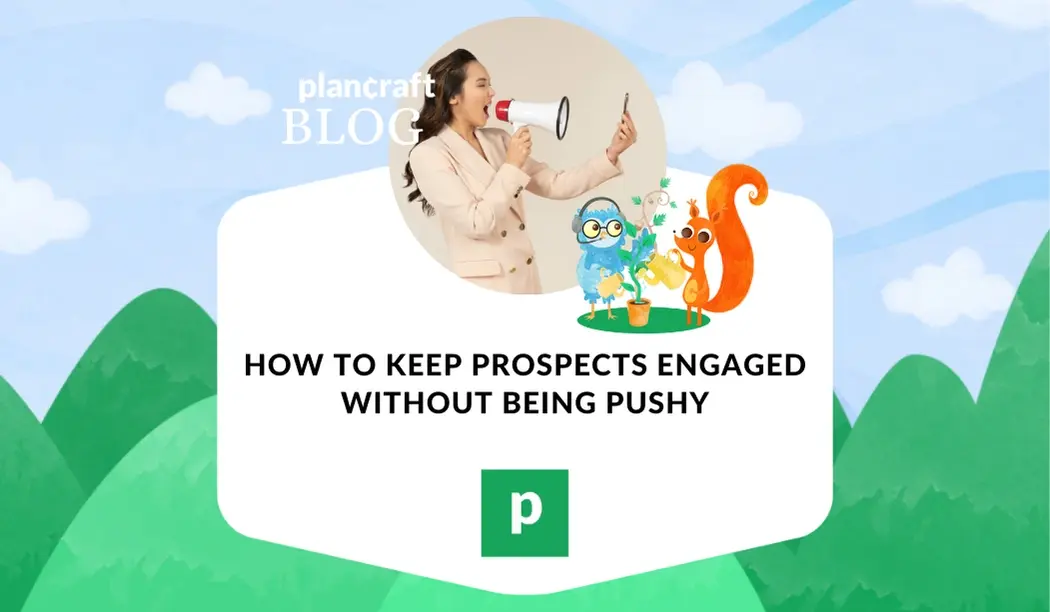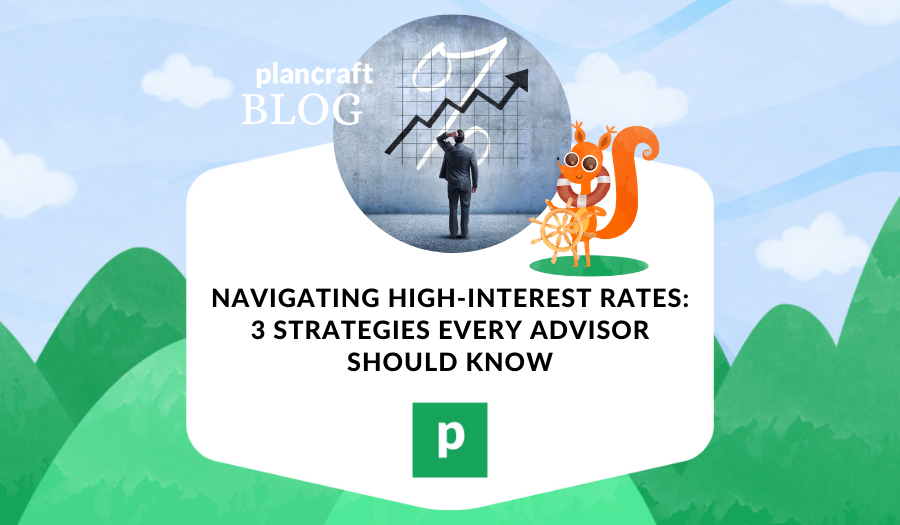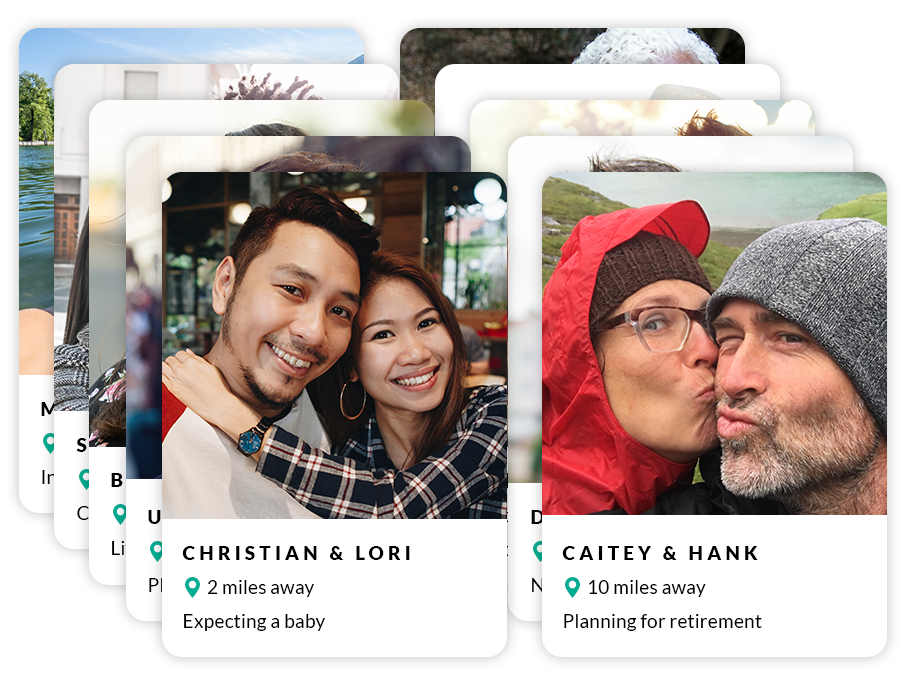Following up with prospects can feel tricky—no one wants to be the advisor who seems overly persistent, but you also don’t want to let warm leads go cold. Finding that perfect balance where you’re engaging without overwhelming prospects? That’s the real art of the follow-up! Done right, follow-ups can keep you top-of-mind, build trust, and nudge clients closer to saying “yes.” Let’s dive into a few strategies to keep those follow-ups engaging, friendly, and effective—without feeling like you’re overdoing it.
1. Timing is Everything: Follow Up with Purpose, Not Pressure
If there’s one key to mastering the follow-up, it’s timing. Reaching out too soon after a meeting or call can feel like you’re hovering, but wait too long, and you risk losing momentum. Finding the right moment to check back in is crucial—and fortunately, it’s easier than you might think.
- Start with a Friendly Thank-You: Right after your first conversation, drop a quick thank-you email. Not only does it keep you fresh in their minds, but it’s a simple gesture that shows respect and appreciation. Plus, it sets a friendly tone for all your future follow-ups!
- Set a Follow-Up Rhythm: A good rule of thumb? Aim for a check-in a week after your initial contact, then every couple of weeks after that if they’re still undecided. Gradually extend your intervals to monthly if needed, so you’re keeping the door open without crowding them.
- Pro Tip: Use a CRM or even a simple calendar reminder to keep track of your follow-up schedule. This way, you’re consistent without accidentally double-messaging anyone (which can feel a little too eager).
Why It Works: When prospects feel like you’re reaching out with purpose, rather than following a pushy script, they’re more likely to respond positively. The goal is to be proactive without being overbearing, and a well-timed follow-up is the best way to do that.
2. Get Personal: Make Each Message Relevant to Them
Cookie-cutter messages are easy to spot, and frankly, they can be a huge turn-off for prospects. People want to feel like they’re being listened to, not just added to a generic list. So when you follow up, try referencing specifics from your last conversation to show them you’ve been paying attention.
- Reference a Personal Detail or Concern: Was your prospect worried about retirement savings? Did they mention upcoming changes in their family situation? Include a quick note that shows you’re thinking about their unique situation.
- Example Message: "Hi [Name], I remember you mentioned wanting to prioritize your savings for retirement. I just came across a resource that might help you get a clearer picture of your next steps—thought I’d share it with you!"
- Dig a Little Deeper with Each Follow-Up: Each time you reach out, think about what else they might need or want to know. This could mean adding a new perspective or addressing a different angle of their original question.
Why It Works: Personal touches like these can make a world of difference in how prospects perceive your follow-ups. It shows that you’re genuinely invested in their needs, not just pushing a one-size-fits-all solution.
3. Offer Value Every Time You Check-In
Let’s be honest: nobody likes feeling like they’re just a name on a list. When you follow up, bring something of value to the table each time. This way, prospects see you as a resource rather than just another salesperson.
- Send Relevant Articles or Insights: Did you come across a great article on tax strategies, financial planning tips, or something that might speak to their concerns? Share it! Even better if it’s something directly related to what they mentioned in your last call.
- Provide Helpful Tips or Resources: Sometimes, a quick tip or tool (like a budgeting template or a guide to saving for college) can be a perfect low-pressure way to re-engage them.
- Example Message: "Hi [Name], I remembered you had some questions about saving on taxes. Here’s an article that breaks down a few simple strategies—I thought you might find it useful!"
Why It Works: When you add value with each follow-up, prospects feel that you’re looking out for them—not just trying to close a deal. It builds trust and positions you as a helpful resource they’ll want to reach out to when they’re ready.
4. Keep the Tone Casual and Conversational
Think of follow-ups as friendly check-ins rather than formal calls. A conversational tone helps your follow-ups feel more natural and less sales-focused. A little warmth goes a long way!
- Avoid Overly Formal Language: Instead of saying, "I wanted to reach out regarding our prior discussion on financial planning," go for something like, "Hey [Name], just checking in to see how things are going and if you had any more questions!"
- Use Friendly, Approachable Language: Keep it light. Imagine you’re chatting with a friend rather than delivering a pitch.
- Example Message: "Hi [Name], just wanted to pop in and see if you had any other questions about what we discussed. No rush—whenever you're ready to chat!"
Why It Works: When prospects don’t feel pressured, they’re more likely to stay engaged. A casual tone keeps the door open for future conversations without making them feel like they’re being pursued for a hard sell.
5. Create a Follow-Up Sequence that Feels Natural
Following up shouldn’t feel like an afterthought, and a structured approach helps you stay organized while giving each prospect the attention they deserve. Think of it as creating a sequence that flows from one message to the next, keeping things engaging without overdoing it.
- Start with a Thank-You, Then Space Out Check-Ins: Begin with that initial thank-you note, follow up a week later with something helpful, and then space out your next check-ins as you gauge their interest.
- Build In a Mix of Value-Based Follow-Ups and Simple Check-Ins: Alternate between sharing useful resources and casual “just checking in” messages to keep it balanced.
- Use a CRM to Set Reminders: A CRM helps automate your follow-up sequence so that no lead falls through the cracks. Set reminders for each stage, so you always know when and how to follow up next.
Why It Works: Having a structured sequence keeps you from overwhelming prospects while making sure you’re steadily building rapport. Plus, it takes the guesswork out of when to reach out next—your sequence has you covered!
Wrap-Up: The Follow-Up Formula for Success
Following up doesn’t have to be intimidating or pushy! With a bit of planning, a personal touch, and some helpful resources, you can make every follow-up feel friendly and engaging. Just remember: it’s all about timing, personalization, value, and that casual, approachable tone.
When done right, follow-ups show prospects you’re not just a financial advisor but a resource, a guide, and someone they’ll want to turn to when they’re ready to make big decisions. So get out there, start following up with confidence, and watch those casual check-ins turn into long-term client relationships!









